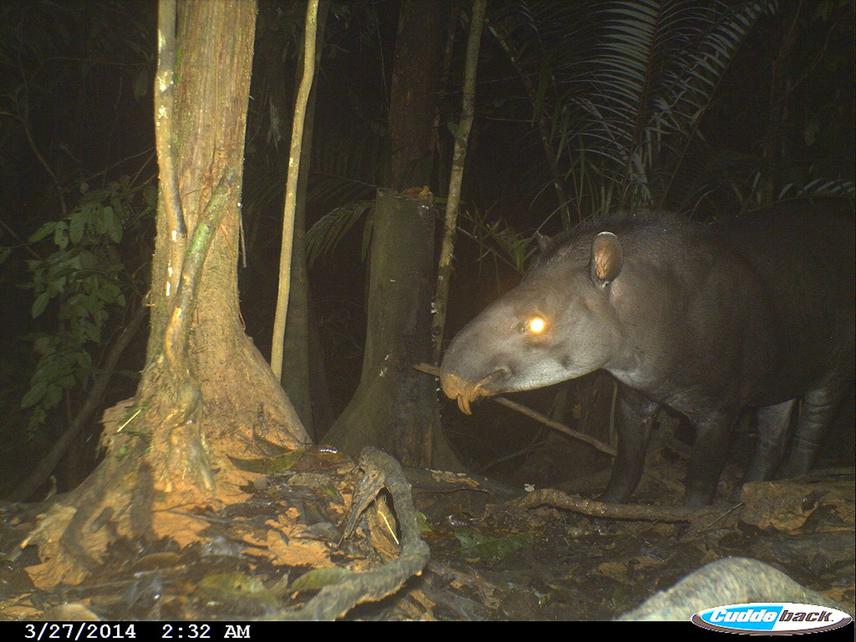Marina Albuquerque Regina de Mattos Vieira
Other projects
12 Mar 2012
Wildlife Management: The Interaction Between Formal and Local Regulations on Wildlife Conservation in the Amazon
Our aim is to evaluate the management measures taken at mineral licks regarding its potential to attract game species, to transform landscape and to control hunting.

Tapir (Tapirus terrestris) at salt lick. © PROMUF-IPi.
Licks are particular landscapes used by both wildlife seeking for mineral salt and hunters seeking for game species, especially lowland tapir (Tapirus terrestris or Tapirus kabomani). The use of these sites involves a complex normative universe shared among hunters that goes from symbolic perspectives to consciously designed measures to control overhunting. Licks can be naturally found where the soil gets partially or completely wet. Some hunters “cultivate” these areas by inputting salt at the soil or even create them by digging the soil and pouring salt on it.
Surveys conducted in the Peruvian Amazon show that the species most frequently observed in natural licks is the lowland tapir. Consequently, tapirs are the main targets at licks. This species holds high prestige throughout the Amazon both in subsistence and cultural aspects. At the SDR Piagaçu-Purus (SDR-PP) it was considered the fourth preferred species for food and the fourth most representative species for consumption in terms of biomass killed between 2012-2013.
However, it is also considered Vulnerable (IUCN 3.1) and less resilient. Lick management is therefore of fundamental importance for the conservation of this species, and serve as umbrella for the conservation of this habitat and other species that frequent there. The study will be carried with three communities in the SDR-PP, all located in the interfluve Purus-Madeira, where local hunters estate that natural licks only occur within an specific area, but artificial licks are created by them with the finality of hunting tapirs.
The team conducting this project is part of Instituto Piagaçu, which already develops research and management projects at SDR-PP since 2004, including the Participatory Monitoring of Wildlife Use. Combining social methods of interview with key-informants and camera-trapping survey at licks we intend to compare lowland tapirs occurrence at licks with different manipulation levels (regarding frequency of use by hunters, salt input and its formation process – natural or artificial) and to describe management measures taken by hunters at licks and local ecological knowledge about licks.
In addition, we will compare the floristic composition surrounding the licks and outside the licks. From a participatory mapping with hunters from the three communities, 12 licks will be selected for installation of camera-traps (one in each lick) and wildlife occupancy estimating during the flooding season. The main conservation issue of the project is to obtain information to support the zoning of areas for protection and sustainable use of natural resources in the SDR-PP.